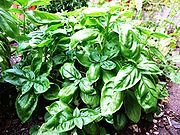1. What is the main use for your yard? Relax, play area or both.
2. Will you BBQ and have large groups of people over?
3. Will you be keeping some of the trees and plants you already have?
4. What do you want gone from the yard?
5. What do you really want to have? Any specific plants that are your favorite, or maybe a water feature. 6. Do you go away often on weekends? The plants you choose need to be hardy drought tolerant.
7. Do you want to tuck in a quiet place to sit down?
8. Can you tackle some of the work by yourself in stages? Making a long-term plan is budget friendly and easy.
9. Do you want to include a fence, path, walkway or deck? These are the first things to add to the main structure of a new garden. Soil and plants can be added gradually.
10. Do you want or need an area of lawn for children to play? How much?
11. Do you have a problem with too much moisture? You can choose to plant bog plants in low wet areas.
12. Is there an ugly fence, wall, shed or gas meter you want to hide?
13. Have you chosen a style? Does it go with the style home you have.
14. Do you want and need to add some shade in an open windy area? Plan ahead and include plants to provide some shade. You may want to build a pergola or covered patio for vines like grapes and wisteria to grow up. Whatever style of garden retreat you choose first consider some of these questions before starting.





































